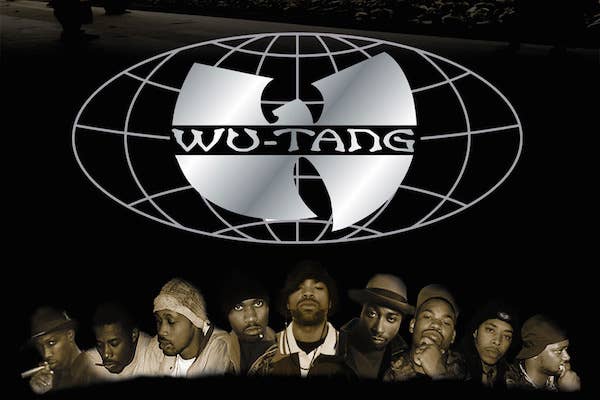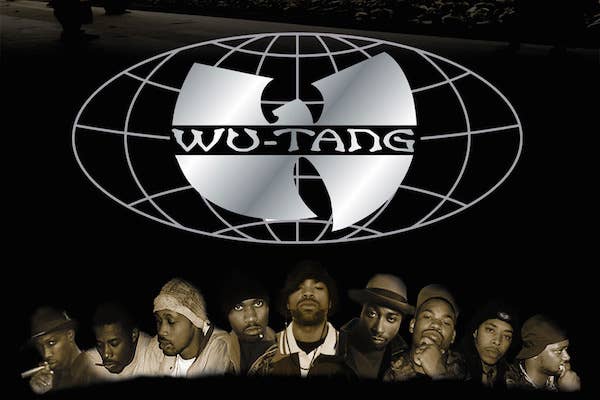1.

Sometimes, I wish that the collective Wu-Tang Clan albums would have stopped after their second, 1997’s Wu-Tang Forever, released 18 years ago today.
Don’t get me wrong—most of The W is my jam, but that third album was three long years after the release of their double-disc opus. Wu-Tang Forever felt like a wild family reunion. The album dropped four years after the Clan hit the scene with their eyes on the “C.R.E.A.M.,” taking an industry that wasn’t ready for that particular brand of calculated mayhem by storm.
1997 was an interesting, transitional time for rap. The entire West Coast sound exploded courtesy of guys like Dr. Dre and Snoop Dogg, taking the hype from, “Yeah, those artists from Cali can drop dope music,” to, “HOLY SHIT, THEY ARE RUNNING THE INDUSTRY!”
We’d seen both 2Pac and The Notorious B.I.G. gunned down in still-unsolved murders. We had also been treated to the first round of Wu-Tang solo albums—we’re talking classic bits from Raekwon, Ghostface Killah, the GZA, Ol’ Dirty Bastard, and Method Man. The hip-hop game, and the Wu-Tang Clan specifically, were on a major high, and with the problems the hip-hop scene was facing, the RZA and company decided to try and (to paraphrase a Deck line from “C.R.E.A.M.”) kick the truth to the youth.
Heavy on Five Percent vernacular and more synthesizer sounds, Wu-Tang Forever immediately felt different. The entire album kicks off with knowledge darts from Popa Wu. Then the clan “Reunited” with one of the illest violin loops ever. There were five minute singles featuring nine verses and no hook. Ghost and Rae “in The M.G.M. coked up, sike!” raging in full storytelling mode. Hell, ODB even stopped in to run through some “Dog Shit.” It was everything you wanted from a Wu album, circa 1997, and more… literally. Because there were two discs. And even though there were some missteps, this was where the Wu-Tang needed to be.
Quick aside: I remember it being finals week at my high school when that album dropped. I NEEDED it, but didn’t have the scratch, and remember borrowing (and paying back) $20 from my art teacher to hit up the Princeton Record Exchange to grab the album. I was in awe. Those were the years where I didn’t have weed to smoke, nor did I have any girls to frolic with, so long nights were spent in my room, playing video games on mute while blasting music. Wu-Tang Forever was my everything, to the point where I remember ditching classes to hop on a Mac in the computer lab and throw in the Wu-Tang Forever disc to explore the CD-ROM content.
I was tired of the “R&B, rap and bullshit” going on in the mainstream, and the Wu truly spoke to a high school me. And while I won’t say that the Wu completely fell off after Wu-Tang Forever, there’s something to be said about the RZA purposefully stepping back and allowing the more Wu-affiliated groups to flourish. Sure, Killarmy had some fire, but we definitely weren’t getting what we got from that first five years of Wu-Tang excellence.
Earlier this year, I sat down with Complex staff writer Justin Charity to try and figure out if the Wu was indeed broken, forever. At the time, I asked, “[i]s the question then, what’s up with RZA? Has RZA creatively peaked?” I don’t want to answer my own question, but in thinking about it, the cohesion of the group is intrinsically linked to its head.
The different parts of the Clan have had their moments to shine: Method Man has continued to be successful as a rapper and actor, and Ghostface’s stock actually continued to rise in the years after Wu-Tang Forever (most recently he dropped two solid albums—36 Seasons and Sour Soul). Yet as a collective, without a strong central mind to either a) built a theme or playhouse for the other members to work within or b) steer the ship to make sure everything is moving as it should, there’s no way that the rest of the body will function properly.
With 2000’s aforementioned The W, you could hear the obvious shift in the dynamic of the group: ODB was locked up, and had to record his vocals for “Conditioner” via jailhouse phone. There were more non-Wu members getting features, including Redman, Junior Reid, Issac Hayes, Snoop Dogg, and Busta Rhymes. It might have been the last great Wu effort, but compared to Wu-Tang Forever, The W could have lived on as fire contributions to individual member’s solo albums.
One thing that will never be tainted, however, is the Wu-Tang Clan’s legacy. No group could have done what they did: becoming a force to be reckoned with out of nowhere, being signed to one imprint while shopping solo deals, and creating a string of consistently-dope solo releases. It’s a streak that we could have seen with Odd Future, but they never reached the scale or scope of the Clan.
While I don’t know what would have happened with the group of Wu-Tang Forever was their final album as a group, I do know that continuing to release albums of lesser quality helps no one. It’s akin to a boxer who was on top in their heyday still trying to slug it out for paydays, tarnishing their legacy with each round. The Wu will always be forever, but there’s a stain on the brand that will take a long time to wash off.



